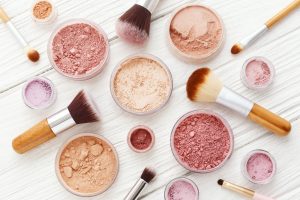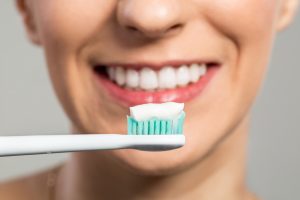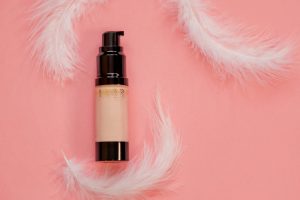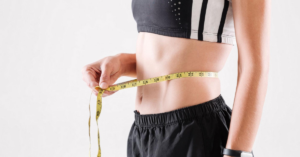Breast Implants: What to Expect and Where to Go
Thinking of getting breast implants? The good news: breast augmentation has gotten safer and looks very natural. Just think of...
By: Dedet Panabi / April 18, 2019

Thinking of getting breast implants? The good news: breast augmentation has gotten safer and looks very natural. Just think of Taylor Swift, who sparked rumors early February because of pics showing off her new, fuller silhouette. “Did she get a boob job, or is it just a really good push up bra?” asked the Twitterverse.
But you’ve got a lot of choices (and considerations) in your quest for bigger breasts. Should you get breast implants or other kinds of non-surgical breast augmentation? What are the risks? How do you pick a shape or size, and what will your breasts look like 10 years from now? This article can help you make the “breast” choice for yourself.

Contents
- What are the kinds of breast implants?
- What’s the best kind of breast implant?
- What are the possible complications?
- What will happen to me if my breast implant leaks?
- How long do breast implants last?
- Can breast implants increase my cancer risk?
- WIll breast implants affect my ability to breastfeed?
- How “big” can I go, and how much can I change my breasts?
- Can breast implants fix sagging/drooping breasts?
- Is there a non-surgical alternative to breast implants?
- Where can I get breast implants in Singapore?
What are the kinds of breast implants?
- Saline breast implants. These are silicone shells containing sterile salt water. They’re usually filled during the procedure, so you need a smaller incision. They’re generally less expensive than silicone implants.
- Silicone breast implants. These are made of silicone gel and are pre-filled so you can choose the shape and size. They feel more like real breast tissue, but need a larger incision and are generally more expensive.
- Structured saline breast implants. Combines the best of saline and silicone. While it’s filled with saline solution, it has an inner support structure that help it feel and move like natural breast tissue.
- Gummy bear breast implants. These have a silicone shell and are filled with a thicker and denser gel. It can give you that natural shape where there’s less fullness at the top and a little “droop”.
What’s the best kind of breast implant?
There’s a lot of factors to consider. Saline implants are safer because your absorb can the fluid if it leaks, but they don’t feel as natural as silicone (one woman described it as “the difference between a Temper Pedic mattress and a waterbed”.) Silicone implants — especially the newer ones — generally leak less, but when they do, they can show up in lymph nodes and mammograms and give a false positive for breast cancer. No, it’s not life-threatening, but it will freak you out!
Structured implants and gummy bear implants are considered “the next generation breast implants” but they’re not entirely free of risk. They’re also more expensive, and because of their material, leaks are harder to detect.
Talk about your options with your Singapore aesthetic surgeon.
What are the possible complications?
Like all cosmetic surgeries, breast augmentation will always have that small risk of infection or slow wound healing, or complications like hematoma or seroma (That’s when where blood or fluid collect near the site).
But the biggest concern is that the breast implant will rupture. Saline breast implants can also deflate, and change in size or shape.
Rupture or deflation can happen after months or even years after you’ve had surgery. In fact, the longer you’ve had implants, the higher your risk. Signs of rupture include the change in size or shape, hard lumps, swelling, tingling, numbness, or a burning sensation. You may also notice lumps called silicone granulomas.
There are also “silent” ruptures that are asymptomatic. That’s why the FDA recommends getting an MRIs (magnetic resonance imaging) three years after getting spot any problems with your breast implant.
Other complications include scarring, less sensation in the nipple area due to nerve damage, and hardening of the breast tissue.

What will happen to me if my breast implant leaks?
If it’s a saline implant, your body will safely absorb or expel the salt-water solution. If it’s a silicone implant, the silicone can spread into the breast and cause lumps or irritation. You’ll need to have it removed or replaced. If you decide not to have another implant, you might want a breast lift or other surgery since your skin has stretched.
How long do breast implants last?
Breast implants will last about 10 to 15 years before it needs to be replaced, either because of a leak or tissue scarring that affect the shape. “I always tell patients who want breast augmentation that their initial procedure is unlikely to be their last,” says New York plastic surgeon Adam Kolker.
Can breast implants increase my cancer risk?
There is an extremely rare cancer called anaplastic large cell lymphoma (ALCL) that’s been linked to implants.
ALCL is not actually breast cancer – it affects the immune system. Scientists are still studying why there’s a connection, but don’t panic just yet: less than 1% of women who get breast implants have been diagnosed.

WIll breast implants affect my ability to breastfeed?
No. Most women who’ve had breast augmentation procedures are able to breastfeed without any problems. Your breast implants won’t affect your milk supply.
How “big” can I go, and how much can I change my breasts?
You need to talk about this with your Singapore plastic surgeon, who can help you decide what’s most flattering for you. But in general, the trend in breast augmentation is leaning towards more natural-looking silhouettes. “The best-selling implants are in the 300- to 450-cc range, which take most patients up approximately two to three cup sizes. But they look more like real breasts,” says Los Angeles plastic surgeon Steven Teitelbaum.
Can breast implants fix sagging/drooping breasts?
No. You need a breast lift, not breast augmentation. Breast lifts (also called mastopexy) is also a surgical procedure, but it changes the shape of your breast instead of adding to its size.
Is there a non-surgical alternative to breast implants?
You can consider fat transfer, where fat is “harvested” from another part of your body (usually your abdomen, buttocks or thighs) and then inserted into your breast. It’s sometimes called fat grafting. It’s used for breast augmentation and breast reconstruction.
This may be a good option for you if you’re not ready for surgery, and just want a small change in breast size (like going from a B cup to a C cup).
However, fat transfer will still involve a small incision. You may need several sessions to get the results you want, and there’s a chance that some of the fat cells will die.
It’s also difficult to say that fat transfer is “safer” than breast implants. Since it’s a relatively new procedure, it doesn’t have as many clinical trials and long-term studies as breast implants. Plus, fat cells can stimulate cell growth, which raises concerns that they can wake up dormant cancer cells. (Research still needs to be done on that area.)
Bottom line: breast implants and fat transfers have different costs, benefits and risks. Discuss these with your Singapore cosmetic surgeon to help you decide which breast augmentation treatment you’re most comfortable with.
Where can I get breast implants in Singapore?
Check out Beauty Insider’s directory of aesthetic clinics to find a certified aesthetic surgeon and clinic in Singapore.















